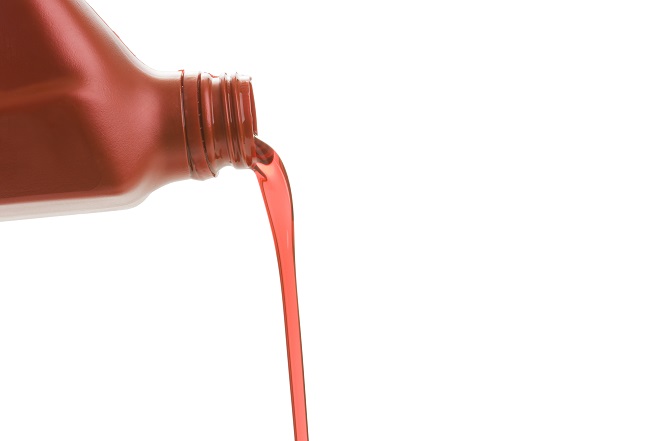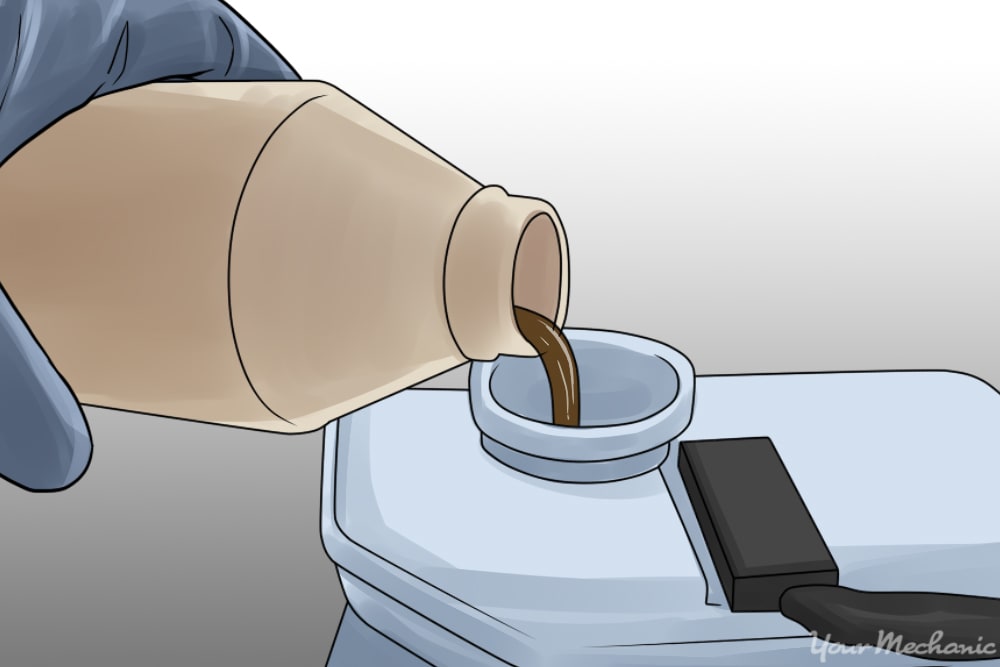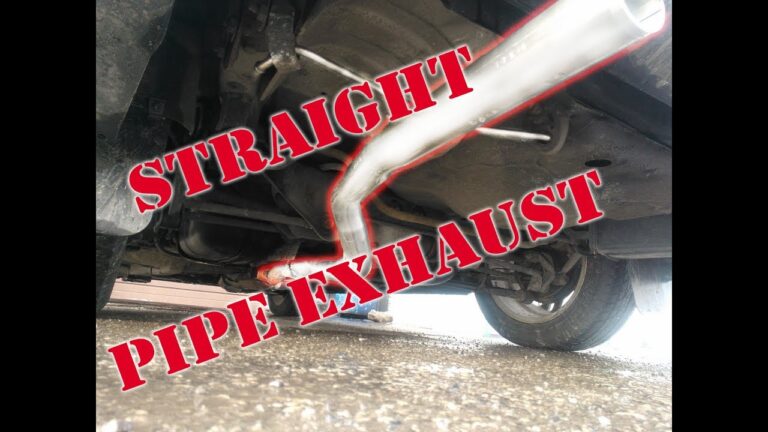How to Dispose of Transmission Fluid
To dispose of transmission fluid, take it to a recycling center or service station. Proper disposal of transmission fluid is crucial to protect the environment and prevent contamination.
Whether you’re changing your vehicle’s transmission fluid yourself or having it done professionally, knowing how to dispose of the old fluid responsibly is essential. Inappropriate disposal methods such as pouring it down a drain or on the ground can harm the ecosystem and groundwater.
Recycling centers and service stations often accept used transmission fluid, ensuring it is disposed of safely and in an environmentally friendly manner. By taking these simple steps, you contribute to a cleaner and healthier environment.
Signs It’s Time To Dispose Of Transmission Fluid
Regular maintenance of transmission fluid is crucial for the overall performance of your vehicle. When it comes to disposing of transmission fluid, it’s important to recognize the signs indicating that the fluid needs to be changed. Ignoring these signs can lead to serious damage to your vehicle’s transmission system.
Burning Odor
One indicator that it’s time to dispose of your transmission fluid is a burning odor. If you notice a distinct burnt smell when your vehicle is running, it could be a sign that the transmission fluid has degraded and needs to be replaced. Ignoring this warning sign can lead to overheating and damage to the transmission system.
Dirty Or Discolored Fluid
Inspect the transmission fluid regularly for visible signs of dirt or discoloration. If the fluid appears dirty or discolored, it signifies that it has become contaminated with particles and needs to be disposed of and replaced with fresh fluid. Maintaining clean transmission fluid is essential for the smooth operation of the transmission system.
Lack Of Smooth Shifting
An obvious sign that it’s time to dispose of transmission fluid is when you experience a lack of smooth shifting. If your vehicle’s transmission is not shifting gears smoothly or if you notice delays or jerking movements when changing gears, it could be due to degraded transmission fluid. In such cases, disposing of the old fluid and replacing it with new fluid is necessary to maintain the transmission system’s efficiency.

Credit: recyclenation.com
Safety Precautions Before Disposal
Before disposing of transmission fluid, it’s crucial to prioritize safety precautions to prevent any potential harm to yourself and the environment.
Allow Transmission To Cool Down
After using the transmission fluid, give it time to cool before handling it for disposal.
Use Protective Gear
Wear gloves and goggles to shield yourself from any potential contact with the fluid.
Prepare A Proper Disposal Container
Obtain a leak-proof container for the collection and transportation of the used transmission fluid.
Methods For Disposing Transmission Fluid
Take It To A Recycling Center
- Bring used transmission fluid to a recycling center to ensure proper disposal.
- Recycling centers have the necessary equipment to handle transmission fluid safely.
- Never pour transmission fluid down the drain as it can harm the environment.
Use A Professional Disposal Service
- Opt for a professional disposal service for convenient and eco-friendly disposal.
- Professional services can safely dispose of transmission fluid according to regulations.
- Avoid dumping transmission fluid in regular waste bins to prevent pollution.
Mix It With Motor Oil For Recycling
- Combine transmission fluid with motor oil for effortless recycling.
- Ensure the mixture meets recycling center requirements before disposal.
- Consult local guidelines for proper disposal of mixed fluids.
Alternatives For Reusing Transmission Fluid
When considering how to dispose of transmission fluid, there are several alternatives that can be explored for reusing it, with environmental and practical benefits in mind. Here are two viable options:
Donating To A Mechanic Or Automotive Shop
Transmission fluid that is in good condition but no longer suitable for the vehicle it was initially intended for can be donated to a mechanic or automotive shop. Mechanics can use it for topping off fluids during repairs or testing of vehicle systems, extending the life of the fluid and reducing waste. Donating transmission fluid to these professionals ensures that it is put to good use and contributes to the sustainability of their operations.
Using It For Cleaning Purposes
Used transmission fluid can be repurposed for cleaning purposes, especially for removing tough stains and residues. As an effective degreaser, it can be employed for cleaning tools, equipment, and shop floors in automotive or mechanical workshops. Reusing transmission fluid in this manner not only prevents its improper disposal but also provides an economical and practical cleaning solution for various workplace needs.
Proper Disposal Of Empty Fluid Containers
Properly disposing of empty transmission fluid containers is essential for environmental safety. Follow local regulations for recycling or disposing of these containers responsibly.
When it comes to disposing of transmission fluid, it’s not just the fluid itself that needs attention. Proper disposal of the empty fluid containers is equally important to ensure environmental safety and compliance. In this article, we will look at two essential methods for disposing of empty fluid containers: triple rinsing and recycling, and checking local regulations for disposal guidelines.
Triple Rinsing And Recycling
Triple rinsing is an effective method to clean out empty fluid containers before disposal. Here’s how you can do it:
- Wear protective gloves and safety goggles to keep yourself safe.
- Start by pouring a small amount of water into the container, covering the inside surface.
- Secure the container’s lid tightly and shake it vigorously for about 30 seconds.
- Empty the rinsed water into a separate container, ensuring it is stored properly for disposal.
- Repeat the rinsing process for two more times, using fresh water each time.
Triple rinsing ensures that most of the residual fluid is removed from the container, reducing the risk of environmental contamination. However, it’s important to note that this method is not suitable for containers that held hazardous or toxic substances.
Once the containers are triple rinsed, recycling becomes the next step for proper disposal. Check with your local recycling facility or center to find out if they accept empty fluid containers. Many recycling programs allow the recycling of plastic and metal containers, but it’s always best to confirm their acceptance beforehand.
Checking Local Regulations For Disposal Guidelines
Aside from triple rinsing and recycling, it’s crucial to check local regulations for specific disposal guidelines. The requirements for disposing of empty fluid containers may vary depending on your area. Here are a few easy steps to follow:
- Visit your local government’s official website and search for waste management or environmental services.
- Look for disposal guidelines or regulations related to empty fluid containers.
- Take note of any specific instructions or restrictions mentioned.
By following the local regulations, you ensure that you dispose of the empty fluid containers in a manner that complies with environmental standards, keeping your community safe and healthy.
Remember, proper disposal of empty fluid containers is an essential part of the overall process when it comes to the responsible management of transmission fluid waste. By triple rinsing and recycling your containers, and adhering to local disposal guidelines, you can contribute to a cleaner and greener future.

Credit: www.wikihow.com

Credit: www.yourmechanic.com
Frequently Asked Questions For How To Dispose Of Transmission Fluid
Does Autozone Take Transmission Fluid?
Yes, AutoZone takes transmission fluid. You can find various brands and types of transmission fluid at AutoZone.
Is Transmission Fluid A Hazardous Waste?
Yes, transmission fluid is considered hazardous waste due to its toxic properties and potential environmental harm.
Can I Mix Transmission Fluid With Motor Oil For Recycling?
No, do not mix transmission fluid with motor oil for recycling. They require separate disposal methods.
What Do You Put Old Transmission Fluid In?
You can take old transmission fluid to a local recycling center or an auto parts store. These facilities have the proper equipment to dispose of the fluid in an environmentally-friendly way. Avoid pouring it down drains or in the trash.
Can You Recycle Transmission Fluid?
Yes, you can recycle transmission fluid. It is important to properly dispose of used fluid to protect the environment.
How Do I Dispose Of Old Transmission Fluid?
To dispose of old transmission fluid, take it to a designated recycling center or a local auto repair shop that accepts it.
What Happens If You Pour Transmission Fluid Down The Drain?
Pouring transmission fluid down the drain is harmful to the environment. It can contaminate water sources and harm aquatic life.
Conclusion
Dispose of transmission fluid safely and responsibly to protect the environment and prevent harm. By following proper disposal practices, you can contribute to a healthier planet and prevent potential hazards. Remember to always check local regulations and use designated recycling centers for used transmission fluid.
Together, we can make a positive impact on our environment.


